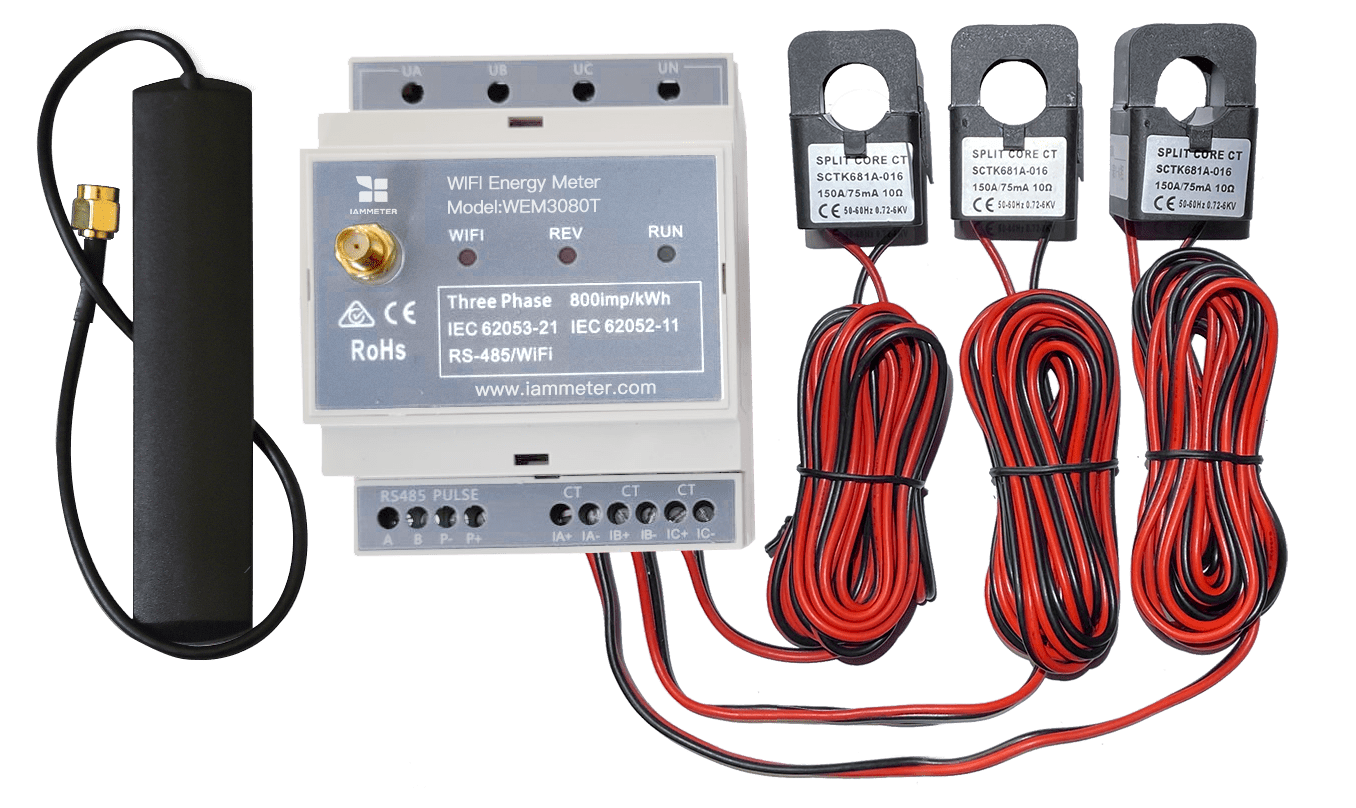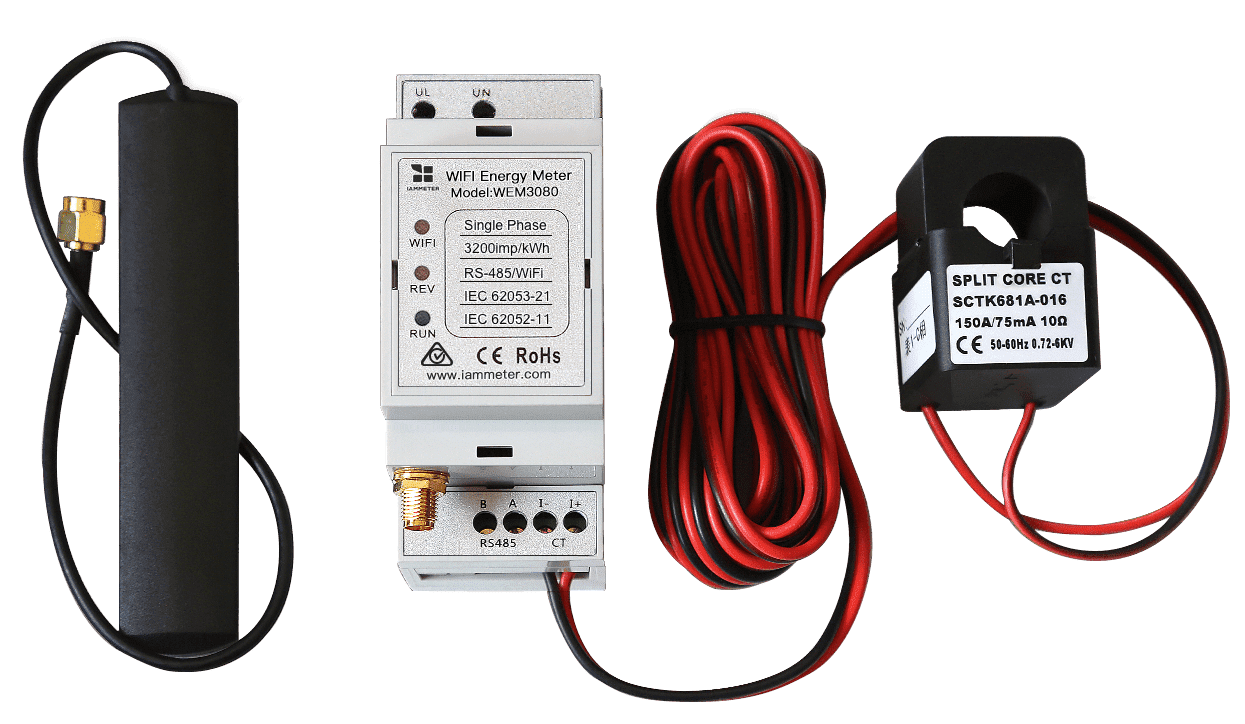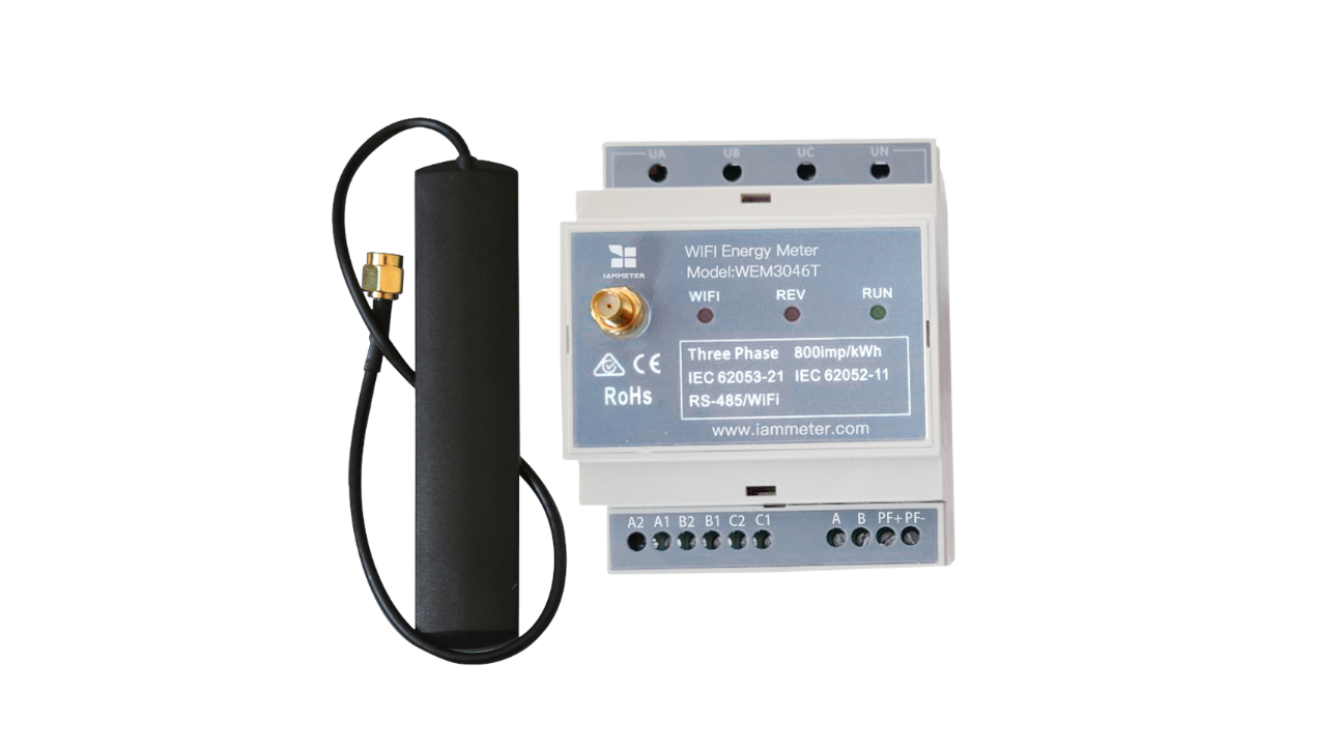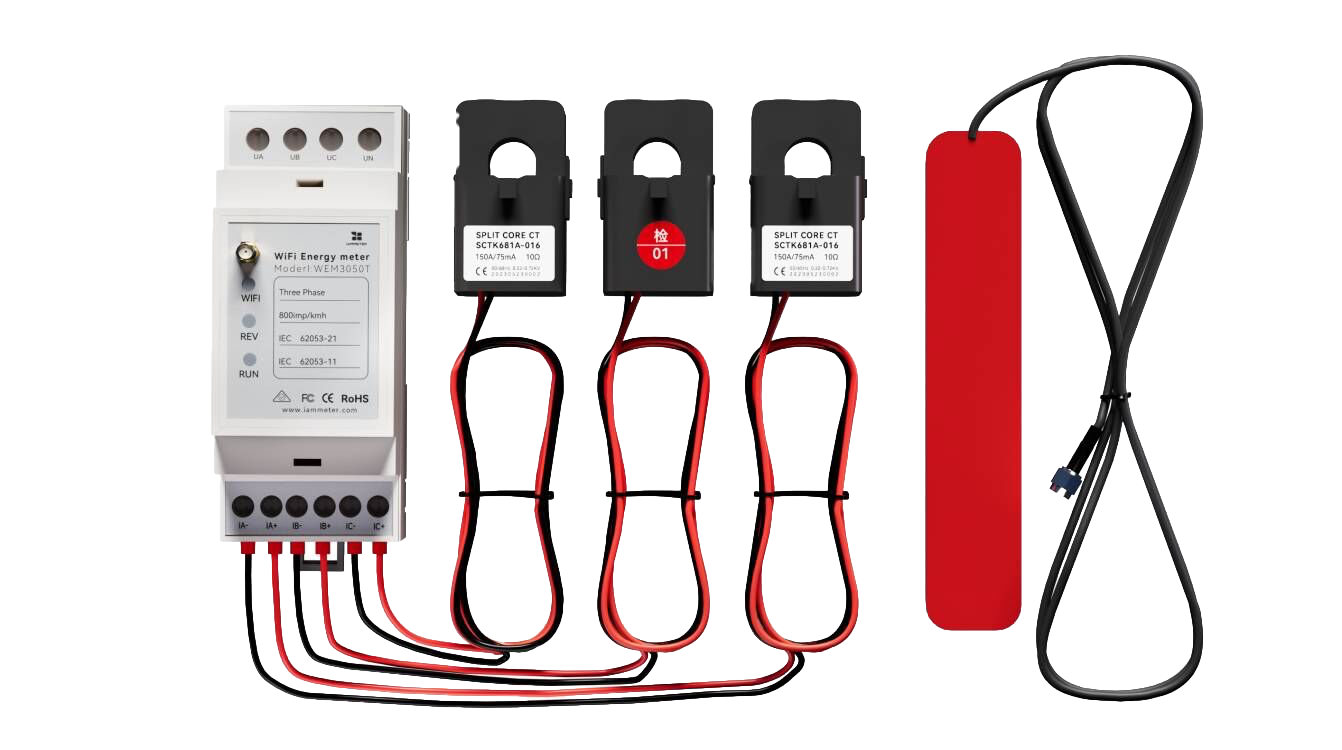Spend $100 to Let Your AC-Coupled Battery System See the Grid Clearly
Abstract
Use IAMMETER’s WEM3050T or WEM3080 energy meter to make your AC-coupled battery system smarter — see, think, and act on real-time grid power flow.
1. What Is an AC-Coupled Battery Storage System?
An AC-coupled battery storage system connects the battery inverter to the same AC bus as your home loads and solar inverter. Unlike DC-coupled systems, the AC-coupled design allows you to add battery storage to an existing solar system easily — no need to modify PV wiring or replace the inverter.
When solar generation exceeds home consumption, the system charges the battery; when loads are higher than solar output, it discharges to reduce grid import. This “retrofit-friendly” architecture makes AC-coupled batteries extremely popular in residential markets such as Europe and Australia.
Well-known AC-coupled battery models include:
- Marstek Venus E — Plug-in AC battery (5.12 kWh / 2.5 kW), supports external smart meters for grid power sensing.
- Fox ESS AIO AC1/H1 Series — 3–6 kW single-phase all-in-one AC systems for existing PV setups.
- Deye SUN Series (AC mode) — Supports “AC coupling retrofit existing solar system.”
All of these systems share one essential requirement: an accurate bi-directional grid power sensor to guide charging and discharging behavior.
2. Why Your AC-Coupled Battery Needs “Eyes”
An AC-coupled battery system, such as Marstek Venus E, works by sensing how power flows between your home and the grid.
- When your home imports power (you’re buying from the grid), the battery discharges.
- When you export excess solar energy, the battery charges.
But how does your system know which direction the power is flowing? That’s where a precise, real-time energy meter becomes the “eyes” of your AC-coupled battery system.
3. Meet IAMMETER’s Smart Eyes — WEM3050T / WEM3080
For less than $100, you can give your system vision and intelligence.
| Model | Typical Use | Highlights |
|---|---|---|
| WEM3050T | 3-phase residential systems | Compact, accurate (±1 %), built-in Wi-Fi, free IAMMETER-Cloud Basic service |
| WEM3080 | Single-phase AC-coupled or PV systems | Affordable, Class 1 accuracy, built-in Wi-Fi, Modbus TCP & HTTP API support |
Both meters can:
- Measure import/export power in real time.
- Work directly with controllers via Modbus TCP, MQTT, or HTTP API.
- Run completely offline (LAN only) or upload data to IAMMETER Cloud for visualization.
- Provide long-term analysis of PV generation, battery charging/discharging, and grid interaction.
4. How It Works in an AC-Coupled System
Grid ─── [WEM3050T / WEM3080] ─── AC Bus ───> Loads
│
└────> PV Inverter + Battery Inverter (AC-Coupled)
- The IAMMETER energy meter measures real-time power flow at the grid connection point.
- The battery inverter (like Marstek Venus E) reads this power value via Modbus or API.
- Control logic:
- When export (power flowing to the grid) is detected → charge the battery.
- When import (power flowing from the grid) is detected → discharge the battery. (Depending on your sign convention, always act based on “export/import” rather than the raw sign of Pgrid.)
- Optional: IAMMETER Cloud visualizes PV → Load → Grid energy flow for daily/weekly/monthly insights.
5. Why Choose IAMMETER
✅ Affordable precision — around $100 per system for Class 1 accuracy. ✅ Full local access — Modbus TCP, MQTT, HTTP API (no cloud dependency). ✅ Free lifetime cloud monitoring — IAMMETER Cloud Basic for visualization and energy reports. ✅ Perfect fit for residential AC-coupled systems — simple installation, stable Wi-Fi, and ready-to-use API integration. ✅ Open for customization — works with Home Assistant, Node-RED, ioBroker, and local automation.
6. Build Smarter AC-Coupled Storage
Instead of running your system “blind,” let it see the grid. With a small investment in IAMMETER’s WEM3050T or WEM3080, your battery can make smarter real-time decisions — improving self-consumption and reducing electricity bills.







